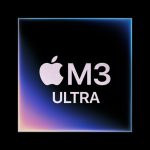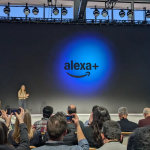
Tesla’s much-anticipated “We, Robot” event in Burbank, California, on October 10 left investors feeling cold and unamused. Elon Musk, the visionary CEO of Tesla Motors, introduced the Cybercab, a self-driving concept car, hoping to revolutionize urban transport. Instead, the event fizzled the hype for Musk’s ambitious promises, causing Tesla shares to crash by nearly 9% the following day.
The Cybercab, a sleek two-seater autonomous vehicle with no pedals or steering wheel, was positioned as the future of self-driving technology. Tesla priced it relatively cheaply (for a Tesla vehicle) under $30,000, hoping to attract buyers and start production by 2027. Musk emphasized the car’s role in a “glorious future,” but analysts and the market seemed less convinced.
The Presentation Failure
Musk boasted the Cybercab’s computing system as “overspecced,” comparing it to Amazon Web Services in its ability to distribute computing power across vehicles. Tesla also plans to integrate the Cybercab into an app-based ride-hailing service, directly competing with companies like Uber and Lyft.
Analysts quickly pointed out several flaws. The absence of luggage space and accommodation for disabled individuals—raised questions about usability. Additionally, the two-seater format is seen as unpopular in the U.S., complicating Tesla’s ambition to penetrate the broader market.
This event fits within Musk’s broader pivot toward AI and robotics, including the announcement of an autonomous Robovan and updates on the humanoid Optimus robot. Musk envisions an AI-powered transportation network that reduces costs and gives users back their time. However, his promises of an “unsupervised” Full Self-Driving (FSD) system next year seem optimistic, given that current systems still require human oversight.
Like the Cybercab, the Robovan’s and Optimus’s details were sparse, and no release date or pricing information was provided. The lack of concrete information led analysts at Jeffries to publish a note titled “We, underwhelmed,” echoing the sentiment of many in the financial community.
Morgan Stanley analysts expressed their frustration, saying, “We were overall disappointed with the substance and detail of the presentation. As such, we anticipate TSLA to be under pressure following the event.”
Market Reactions and Broader Implications
Tesla’s stock, which had recently risen on speculation about the launch, reversed course dramatically. Companies like Waymo and Baidu are deploying self-driving fleets in major cities, garnering support from local governments. Moreover, Uber and Lyft saw their shares rise over 10% each following the event, reversing fears that Tesla’s robotaxi ambitions would disrupt their businesses.
Paul Miller, an analyst at Forrester, commented, “It will be extremely difficult for Tesla to offer a new vehicle at that price within that timescale. He suggested that economies of scale might eventually reduce costs, but without external subsidies or Tesla taking a loss on each vehicle, a $30,000 Cybercab seems implausible this decade.
Earlier this year, the Association for Computing Machinery (ACM) warned policymakers not to assume that fully automated vehicles would reduce road injuries and fatalities. The Cybercab’s unconventional design complicates approval under existing safety frameworks. Being not so wheelchair-friendly, it could also violate the Americans with Disabilities Act (ADA).
The lack of near-term opportunities and detailed roadmaps left many questioning Tesla’s ability to deliver on Musk’s grand vision. As the dust settles, Tesla faces an uphill battle to regain investor confidence and prove that the Cybercab is more than just a futuristic concept.
For now, the event serves as a stark reminder that even the most visionary ideas require solid execution and practical details to succeed in the real world.




















